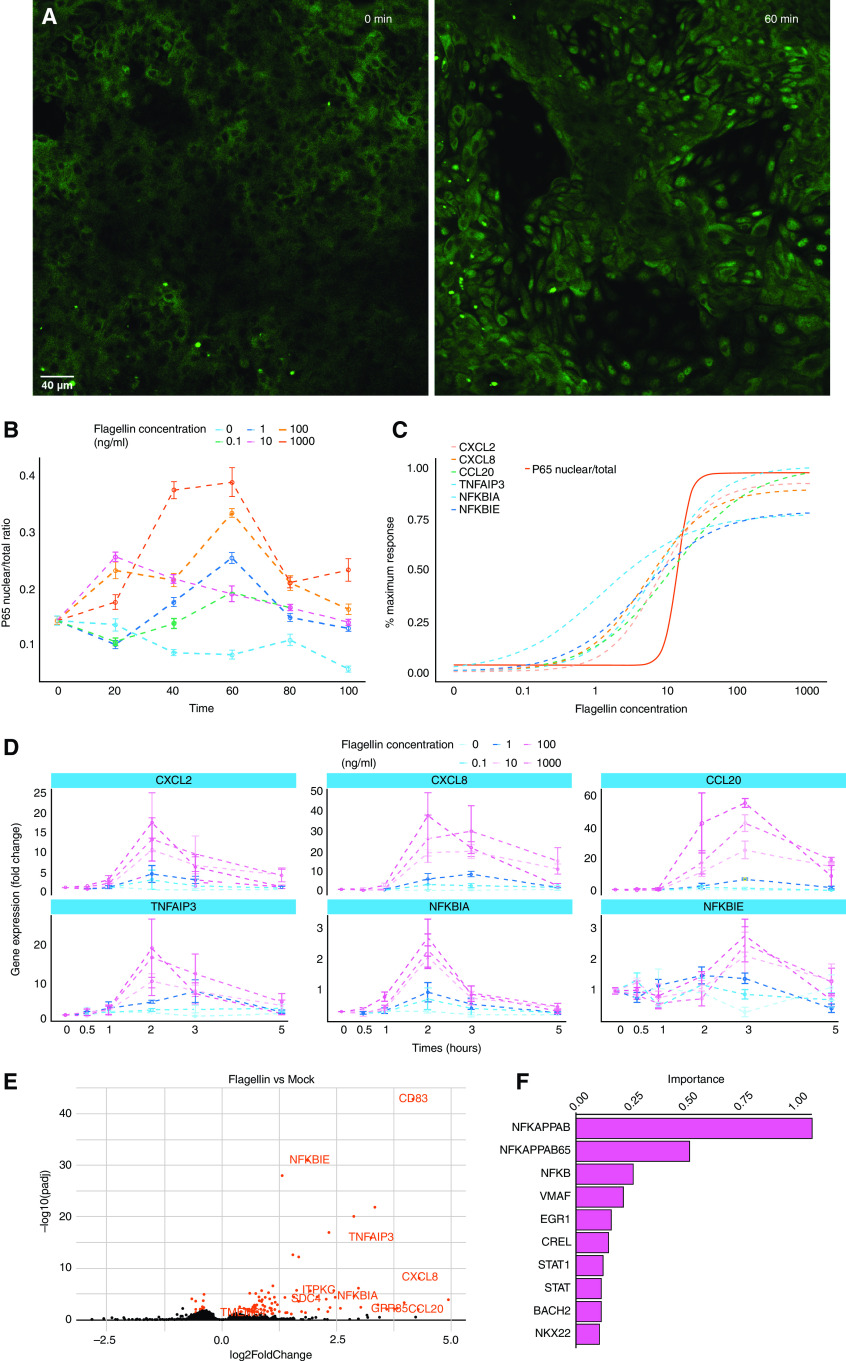Figure 1.
Flagellin triggers a switch-like TLR5 (Toll-like receptor 5) response. Evaluation of P65 nuclear translocation in differentiated airway epithelial cells treated with 200 μl of 0 (vehicle), 0.1-, 1-, 10-, 100-, or 1,000-ng/ml apical FliCΔ174–400 for 0, 20, 40, 60, 80, and 100 minutes was conducted. (A) Representative confocal images showing cells before (0 min; left) and after (60 min; right) stimulation with 100-ng/ml FliCΔ174–400. Scale bar, 40 μm. (B) Time course of P65 nuclear translocation. (C) Dose responses for the expression of the CXCL2, CXCL8, CCL20, TNFAIP3, NFκBIA, and NFκBIE genes (dashed lines) and P65 nuclear translocation (solid line, half maximal effective concentration = 13.68 ng/ml). The area under the curve was extracted for the time course data and plotted over the dose response. (D) Time course of airway epithelial cells’ inflammatory response to flagellin. Quantitative PCR analysis of differentiated airway epithelial cells from wild-type pigs treated with 0- (vehicle), 0.1-, 1-, 10-, 100-, or 1,000-ng/ml apical FliCΔ174–400 for 0, 0.5, 1, 2, 3, and 5 hours was conducted. Gene expression is shown relative to the mock group. (E) Volcano plot of RNA-sequencing data, in which the −log10 of the padj is plotted against log2 fold change. Differentiated airway epithelial cells were stimulated or not with 100-ng/ml FliCΔ174–400 for 2 hours. Transcripts that are highlighted in red are discussed in the text. (F) Distant Regulatory Elements of Co-regulated Genes transcription factor motif analysis for the differentially expressed genes after flagellin stimulation; the importance is a product of the motif occurrence (the fraction of regulatory elements containing the motif) and weight score (motif prevalence compared with background gene list). Data are representative of three to four experiments. NFκBIA = nuclear factor-κ-B-inhibitor alpha; NFκBIE = nuclear factor-κ-B-inhibitor ε; padj = adjusted P value; TNFAIP3 = tumor necrosis factor, α-induced protein 3.

